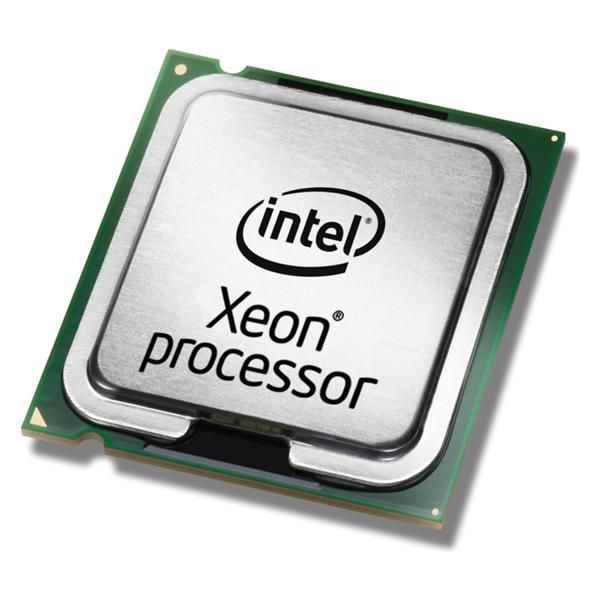- Home
- Server, Computer & Printer Parts
- Servers & Computers
- System Components
- CPUs
- Hewlett Packard Enterprise Xeon E5-2440 (15M Cache, 2.40 GHz, 7.20 GT/s Intel QPI) – 661124-L21-RFB
Hewlett Packard Enterprise Xeon E5-2440 (15M Cache, 2.40 GHz, 7.20 GT/s Intel QPI)
This part is used or refurbished. All accessories may NOT be included.
MPN 661124-L21-RFB
EAN/UPC 5712505858066
OEM 661124-L21
Stock level
Intel® Turbo Boost Technology
Intel® Turbo Boost Technology dynamically increases the processor's frequency as needed by taking advantage of thermal and power headroom to give you a burst of speed when you need it, and increased energy efficiency when you don’t.
Intel® vPro Technology
Intel® vPro™ Technology is a set of security and manageability capabilities built into the processor aimed at addressing four critical areas of IT security: 1) Threat management, includin...
Specifications for 661124-L21-RFB
Features
CPU configuration (max)
2
Embedded options available
No
Execute Disable Bit
Yes
Idle States
Yes
Market segment
Server
PCI Express slots version
3.0
Supported instruction sets
AVX
Thermal Monitoring Technologies
Yes
Memory
ECC
Yes
Maximum internal memory supported by processor
375 GB
Memory channels
Triple-channel
Memory clock speeds supported by processor
800, 1066, 1333
Memory types supported by processor
DDR3-SDRAM
Other features
Intel® Virtualization Technology (Intel® VT)
VT-d, VT-x
Package dimensions
Gross Weight (Package, kg)
1 kg
Power
Thermal Design Power (TDP)
95 Watt
VID Voltage Range
0.6 - 1.35 V
Processor
Box
No
Bus type
QPI
Component for
Server/workstation
Memory bandwidth supported by processor (max)
32 GB/s
Number of QPI links
1
Processor base frequency
2.4 GHz
Processor boost frequency
2.9 GHz
Processor cache
15 MB
Processor cache type
L3
Processor cores
6
Processor family
Intel® Xeon® E5 Family
Processor frequency
2.4 GHz
Processor lithography
32 nm
Processor model
E5-2440
Processor operating modes
64-bit
Processor socket
LGA 1356 (Socket B2)
Processor threads
12
Stepping
C2
System bus rate
7.2 GT/s
Thermal Design Power (TDP)
95 Watt
VID Voltage Range
0.6 - 1.35 V
Processor special features
Enhanced Intel SpeedStep Technology
Yes
Intel Demand Based Switching
Yes
Intel Flex Memory Access
Yes
Intel Trusted Execution Technology
Yes
Intel Virtualization Technology (VT-x)
Yes
Intel Virtualization Technology for Directed I/O (VT-d)
Yes
Intel VT-x with Extended Page Tables (EPT)
Yes
Intel® AES New Instructions (Intel® AES-NI)
Yes
Intel® Hyper Threading Technology (Intel® HT Technology)
Yes
Intel® Turbo Boost Technology
Yes
Intel® vPro™ Platform Eligibility
Yes
Intel® vPro™ Technology
Yes
Product dimensions
Net Weight (Product, kg)
0.9 kg
Vendor information
Brand Name
Warranty
1 Year(s)
Weight & dimensions
Processor package size
4.5 cm
Description
Xeon E5-2440 (15M Cache, 2.40 GHz, 7.20 GT/s Intel QPI)
Intel® Turbo Boost Technology
Intel® Turbo Boost Technology dynamically increases the processor's frequency as needed by taking advantage of thermal and power headroom to give you a burst of speed when you need it, and increased energy efficiency when you don’t.
Intel® vPro Technology
Intel® vPro™ Technology is a set of security and manageability capabilities built into the processor aimed at addressing four critical areas of IT security: 1) Threat management, including protection from rootkits, viruses, and malware 2) Identity and web site access point protection 3) Confidential personal and business data protection 4) Remote and local monitoring, remediation, and repair of PCs and workstations.
Intel® Hyper-Threading Technology
Intel® Hyper-Threading Technology (Intel® HT Technology) delivers two processing threads per physical core. Highly threaded applications can get more work done in parallel, completing tasks sooner.
Intel® Virtualization Technology (VT-x)
Intel® Virtualization Technology (VT-x) allows one hardware platform to function as multiple “virtual” platforms. It offers improved manageability by limiting downtime and maintaining productivity by isolating computing activities into separate partitions.
Intel® Virtualization Technology for Directed I/O (VT-d)
Intel® Virtualization Technology for Directed I/O (VT-d) continues from the existing support for IA-32 (VT-x) and Itanium® processor (VT-i) virtualization adding new support for I/O-device virtualization. Intel VT-d can help end users improve security and reliability of the systems and also improve performance of I/O devices in virtualized environments.
Intel® Trusted Execution Technology
Intel® Trusted Execution Technology for safer computing is a versatile set of hardware extensions to Intel® processors and chipsets that enhance the digital office platform with security capabilities such as measured launch and protected execution. It enables an environment where applications can run within their own space, protected from all other software on the system.
AES New Instructions
Advanced Encryption Standard New Instructions (AES-NI) are a set of instructions that enable fast and secure data encryption and decryption. AES-NI are valuable for a wide range of cryptographic applications, for example: applications that perform bulk encryption/decryption, anthentication, random number generation, and authenticated encryption.
Intel® 64
Intel® 64 architecture delivers 64-bit computing on server, workstation, desktop and mobile platforms when combined with supporting software. Intel 64 architecture improves performance by allowing systems to address more than 4 GB of both virtual and physical memory.
Idle States
Idle States (C-states) are used to save power when the processor is idle. C0 is the operational state, meaning that the CPU is doing useful work. C1 is the first idle state, C2 the second, and so on, where more power saving actions are taken for numerically higher C-states.
Enhanced Intel SpeedStep® Technology
Enhanced Intel SpeedStep® Technology is an advanced means of enabling high performance while meeting the power-conservation needs of mobile systems. Conventional Intel SpeedStep® Technology switches both voltage and frequency in tandem between high and low levels in response to processor load. Enhanced Intel SpeedStep® Technology builds upon that architecture using design strategies such as Separation between Voltage and Frequency Changes, and Clock Partitioning and Recovery.
Intel® Demand Based Switching
Intel® Demand Based Switching is a power-management technology in which the applied voltage and clock speed of a microprocessor are kept at the minimum necessary levels until more processing power is required. This technology was introduced as Intel SpeedStep® Technology in the server marketplace.
Thermal Monitoring Technologies
Thermal Monitoring Technologies protect the processor package and the system from thermal failure through several thermal management features. An on-die Digital Thermal Sensor (DTS) detects the core's temperature, and the thermal management features reduce package power consumption and thereby temperature when required in order to remain within normal operating limits.
Intel® Flex Memory Access
Intel® Flex Memory Access facilitates easier upgrades by allowing different memory sizes to be populated and remain in dual-channel mode.
Execute Disable Bit
Execute Disable Bit is a hardware-based security feature that can reduce exposure to viruses and malicious-code attacks and prevent harmful software from executing and propagating on the server or network.
Intel® VT-x with Extended Page Tables (EPT)
Intel® VT-x with Extended Page Tables (EPT), also known as Second Level Address Translation (SLAT), provides acceleration for memory intensive virtualized applications. Extended Page Tables in Intel® Virtualization Technology platforms reduces the memory and power overhead costs and increases battery life through hardware optimization of page table management.
*The product data above is provided by Icecat. EET cannot be held responsible for errors in relation to this.




